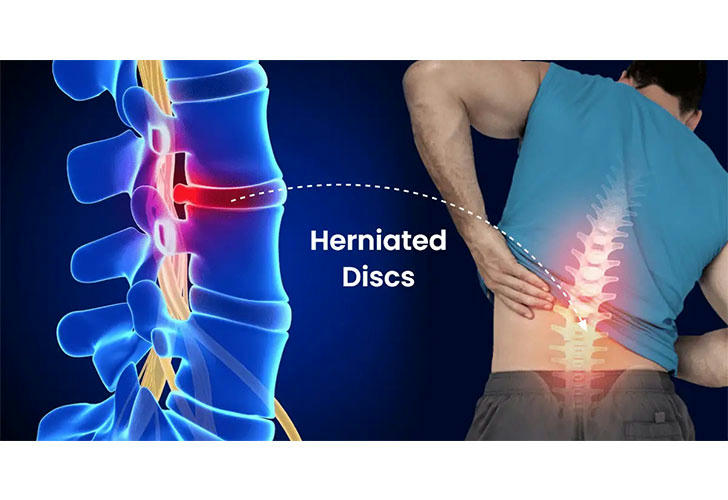How to Perform Herniated Disc Rehabilitation Exercises at Home?
Herniated discs can cause significant pain and discomfort, impacting daily activities and overall quality of life. Rehabilitation exercises are essential for managing symptoms, improving mobility, and promoting healing. This article provides a comprehensive guide on how to perform effective rehabilitation exercises for a herniated disc at home, along with recommended products to aid your recovery.

Understanding Herniated Discs
A herniated disc occurs when the soft material inside the disc bulges out through a tear in the tougher exterior. This can press on nearby nerves, leading to pain, numbness, or weakness in the affected area. Common symptoms include lower back pain, sciatica (pain radiating down the leg), and difficulty moving.
Key Goals of Rehabilitation
1. Pain Relief: Reduce discomfort through gentle stretching and strengthening exercises.
2. Improved Mobility: Enhance flexibility and range of motion in the spine.
3. Strengthening Core Muscles: Build strength in the muscles that support the spine to prevent future injuries.
4. Promoting Proper Posture: Encourage good posture habits to alleviate pressure on the spine.
Recommended Exercises for Herniated Discs
1. Pelvic Tilts
How to Do It: Lie on your back with your knees bent and feet flat on the floor. Gently flatten your lower back against the floor by tightening your abdominal muscles and tilting your pelvis upward. Hold for 5 seconds, then relax. Repeat 10-15 times.
Benefits: Strengthens abdominal muscles and helps stabilize the lower back.
2. Knee-to-Chest Stretch
How to Do It: Lie on your back with your knees bent. Bring one knee toward your chest while keeping the other foot flat on the floor. Hold for 15-30 seconds, then switch legs. Repeat 3-5 times for each leg.
Benefits: Stretches the lower back and relieves tension.
3. Bird Dog
How to Do It: Start on your hands and knees with your hands under your shoulders and knees under your hips. Extend one arm forward while simultaneously extending the opposite leg back. Hold for 2-3 seconds, then return to starting position. Alternate sides for 10 repetitions.
Benefits: Improves core stability and balance without straining the back.
4. Bridging
How to Do It: Lie on your back with knees bent and feet flat on the floor. Lift your hips off the ground until your body forms a straight line from shoulders to knees. Hold for a few seconds before lowering back down. Repeat 10-15 times.
Benefits: Strengthens glutes and lower back muscles.
5. Press-Up Back Extensions
How to Do It: Lie face down with your arms at your sides. Place your hands under your shoulders and gently push up, lifting your upper body while keeping your hips on the floor. Hold for a few seconds before lowering back down. Repeat 10 times.
Benefits: Helps improve spinal extension and reduces pressure on discs.
6. Hamstring Stretch
How to Do It: Sit on the floor with one leg extended straight out and the other leg bent so that the foot is against the inner thigh of the extended leg. Reach toward your toes of the extended leg until you feel a gentle stretch in the hamstring. Hold for 20-30 seconds, then switch legs.
Benefits: Increases flexibility in the hamstrings, reducing strain on the lower back.
Recommended Products for Home Rehabilitation
1. Resistance Bands
Useful for strengthening exercises; they provide resistance without putting excessive strain on joints.
2. Foam Roller
Great for self-myofascial release; helps relieve muscle tightness and improve flexibility.
3. Exercise Mat
Provides cushioning during exercises; essential for comfort while performing stretches and movements.
4. Back Support Cushion
Helps maintain proper posture while sitting; beneficial during recovery periods when sitting is necessary.
5. Heating Pad
Can be used before exercises to relax muscles or after workouts to reduce soreness.
Tips for Successful Rehabilitation at Home
Start Slowly: Begin with gentle exercises that do not exacerbate pain; gradually increase intensity as tolerated.
Stay Consistent: Aim for regular exercise sessions (3-5 times per week) to promote healing and strength building.
Listen to Your Body: Pay attention to pain signals; avoid any movements that cause significant discomfort.
Consult a Professional: Work with a physical therapist or healthcare provider to develop a personalized exercise plan tailored to your specific condition.
Conclusion
Recovering from a herniated disc requires dedication and a structured approach to rehabilitation exercises at home. By focusing on gentle stretching, strengthening core muscles, and improving mobility, individuals can effectively manage their symptoms and promote healing. Utilizing recommended products can further enhance recovery efforts, making it easier to perform exercises safely and comfortably. Always consult healthcare professionals before starting any new exercise program to ensure it is appropriate for your specific situation.
